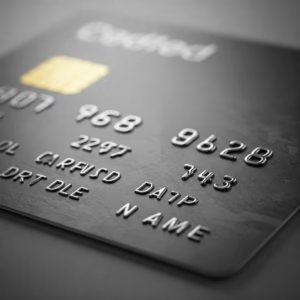Complete guide on how to make a credit card for your child
Learn how to apply for a credit card for your child

Introducing your child to the world of credit can be a valuable step in their financial education. However, navigating the options and understanding the responsibilities is crucial. This comprehensive guide will walk you through the different ways to get a credit card for your child, helping you make informed decisions that promote responsible spending and build a foundation for their financial future.
Understanding the Options: Different Paths to a Child’s Credit Card

There isn’t typically a “credit card for kids” in the traditional sense, as minors generally can’t enter into legally binding contracts on their own. However, there are several ways parents or guardians can provide their children with access to and experience with credit:
Becoming an Authorized User: The Most Common Starting Point
The most straightforward way for a child to have access to a credit card is by becoming an authorized user on your existing credit card account.
- How it works: As the primary cardholder, you can add your child as an authorized user. They will receive their own credit card with their name on it, linked to your account.
- Benefits: This allows your child to make purchases and learn how a credit card works under your supervision. Their spending activity can also be reported to credit bureaus, potentially helping them build a credit history over time (though this varies by issuer and age).
- Considerations: You, as the primary cardholder, are fully responsible for all charges made by the authorized user. It’s crucial to set spending limits and have open communication about responsible usage.
Secured Credit Cards: Building Credit with a Security Deposit

While typically aimed at individuals with no credit or bad credit, a secured credit card could be an option for older teenagers (usually 18+) with a co-signer (you).
- How it works: A secured credit card requires a security deposit, which typically acts as the credit limit.
- Benefits: Responsible use of a secured card can help build or rebuild credit.
- Considerations: The child will need to have the funds for the security deposit, or you’ll need to provide them. As a co-signer, you are responsible for the debt if your child defaults.
Prepaid Debit Cards: A Stepping Stone Before Credit
While not technically a credit card, a prepaid debit card can be an excellent tool for teaching younger children about managing money and spending within a set limit.
- How it works: You load funds onto the card, and your child can spend up to that amount.
- Benefits: It introduces the concept of using a card for purchases without the risk of debt.
- Considerations: Prepaid debit cards do not build credit.
Step-by-Step Guide: Adding Your Child as an Authorized User

If you choose the authorized user route, here’s a general process:
1. Contact Your Credit Card Issuer
Call the customer service number on the back of your credit card or visit their website. Inquire about the process for adding an authorized user and any age restrictions.
2. Provide Your Child’s Information
You will likely need to provide your child’s full name, date of birth, and Social Security number (if they have one).
3. Agree to the Terms and Conditions
Understand the terms associated with adding an authorized user, including your responsibility for their spending.
4. Set Spending Limits (Optional but Recommended)
Many credit card issuers allow you to set spending limits for authorized users. This is a crucial step in managing their spending and preventing unexpected charges.
5. Receive the Authorized User Card
Once approved, your child will receive their own credit card in the mail.
6. Educate Your Child on Responsible Use
This is the most critical step. Explain how credit cards work, the importance of staying within the spending limit, and the consequences of not paying the balance.
Important Considerations Before Getting a Credit Card for Your Child

Before adding your child as an authorized user or exploring other options, consider the following:
Your Child’s Maturity Level
Assess your child’s readiness to handle the responsibility of a credit card. Do they understand the concept of spending within limits and the importance of paying back money?
Your Own Credit Habits
Your child’s credit activity as an authorized user is linked to your account. If you have poor credit habits, it could negatively impact their future credit history. Ensure you are a responsible credit card user.
Setting Clear Expectations and Rules
Establish clear rules and expectations regarding how the credit card should be used. Discuss budgeting, tracking expenses, and the importance of paying the balance on time.
Monitoring Their Spending

Regularly review your credit card statements with your child to track their spending and discuss their purchases.
Potential Impact on Their Future Credit
While being an authorized user can help build credit, the primary responsibility for the account and its history remains with you.
Alternatives to Traditional Credit Cards for Young People
Consider these alternatives as stepping stones or if a traditional credit card isn’t the right fit yet:
Debit Cards
Debit cards linked to a checking account allow children to spend their own money responsibly.
Prepaid Cards
As mentioned earlier, prepaid cards offer a controlled spending environment.
Allowance and Budgeting Apps
These tools can help children learn about managing money and making spending decisions without using credit.
Guiding Your Child Towards Financial Responsibility

Getting a credit card for your child, primarily through adding them as an authorized user, can be a valuable opportunity to teach them about responsible financial management and the basics of credit. By carefully considering their maturity level, setting clear expectations, and actively monitoring their usage, you can empower them with financial literacy skills that will benefit them for years to come. Remember that you are ultimately responsible for the charges, so open communication and ongoing education are key to a positive experience.





